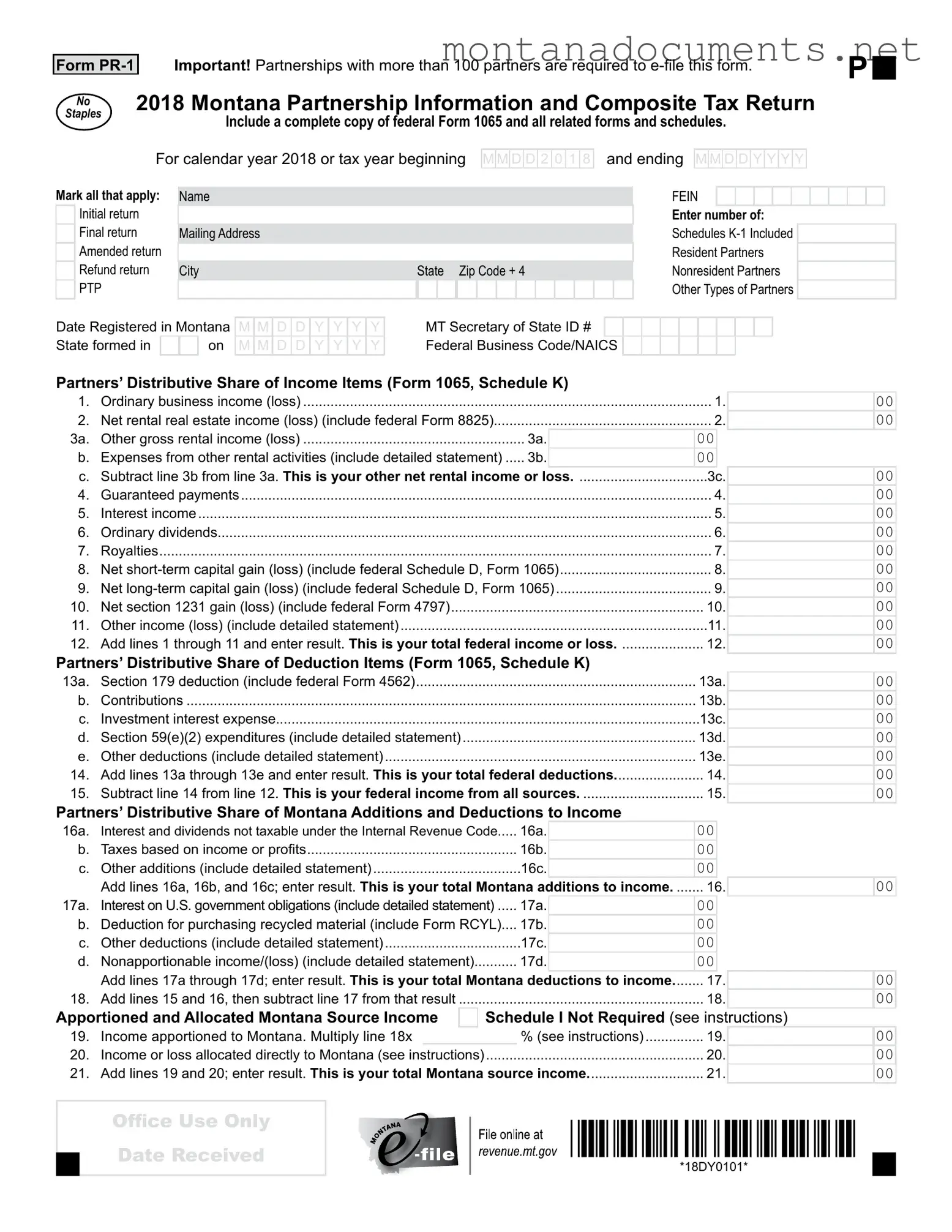The Montana PR-1 form shares similarities with the IRS Form 1065, which is the U.S. Return of Partnership Income. Both forms require partnerships to report their income, deductions, and credits. They serve as the foundational documents for reporting a partnership's financial activities to the federal government. Just as the PR-1 requires a complete copy of Form 1065 and its related schedules, Form 1065 also demands detailed information about each partner's distributive share of income and deductions, ensuring transparency and compliance with tax obligations.
Another document akin to the Montana PR-1 is the Schedule K-1 (Form 1065). This form is used to report each partner's share of income, deductions, and credits from the partnership. Similar to the PR-1, which includes a section for listing each partner's distributive share, the K-1 provides specific details that partners need for their individual tax returns. Both documents emphasize the importance of accurately reflecting each partner's financial stake in the partnership, ensuring that all income and deductions are properly allocated.
The Montana PR-1 also resembles the IRS Form 8865, used for reporting information on U.S. persons with respect to certain foreign partnerships. Both forms require detailed financial disclosures and the reporting of income, deductions, and credits. While the PR-1 focuses on Montana tax obligations, Form 8865 addresses international tax considerations, yet they both emphasize the need for comprehensive reporting to maintain compliance with tax regulations.
Additionally, the Montana PR-1 shares characteristics with the IRS Form 1120-S, which is filed by S corporations. Both forms are designed for pass-through entities, meaning that income is reported on the owners' tax returns rather than being taxed at the entity level. This similarity highlights the common goal of ensuring that income and deductions flow through to the individual partners or shareholders, promoting a clear understanding of tax liabilities across different business structures.
The Montana Composite Income Tax Return also aligns with the PR-1, particularly in how it addresses the tax obligations of partnerships with nonresident partners. Both documents facilitate the calculation of taxes owed by partnerships and ensure that each partner's share of income is accurately reported. The composite return provides a streamlined process for partnerships to fulfill their tax responsibilities, similar to how the PR-1 consolidates essential information for Montana tax purposes.
For anyone involved in a sale, understanding the nuances of transaction documentation is crucial; thus, the Bill of Sale form plays a vital role in ensuring clarity and protection for both parties involved. This form, which can be crucial in various transactions, outlines the specifics of the sale and transfer of ownership. For more detailed information on how to effectively utilize this form, you can refer to the following resource: https://onlinelawdocs.com/bill-of-sale/.
Lastly, the Montana Schedule K-1 is another document that parallels the PR-1. This schedule is specifically designed to report each partner's share of income, deductions, and credits from the partnership, much like the K-1 associated with the federal Form 1065. Both schedules serve to inform partners about their individual tax responsibilities and ensure that the partnership's financial activities are accurately reflected in each partner's tax filings. The emphasis on clarity and detail in both documents helps to uphold the integrity of the tax reporting process.
